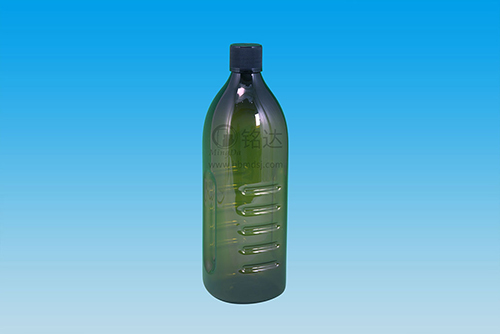Contact: Meg Li +86 13580822157
Shu Shuang +8613600245207
Cindy LEI +86 13580828071
Selina Tan +86 13580828249
Landline: 07153066999/07153066996/07153066995
Address: East Section of Fengri Avenue, Economic Development Zone, Chongyang County, Xianning City, Hubei Province
QQ: 278310943/1246260226
Email: lyb@mingdarongqi.com
lhm@mingdrong.com
hm@mingdarongqi.com
Plastics can be seen everywhere in our lives. Plastic products are made of different materials, different materials and different applications. The numbers on the bottom of the plastic bottle represent different materials. Food plastic bottle small series for you to introduce in detail:
The number "1" stands for polyethylene terephthalate, ie PET. Mainly used in mineral water bottles, carbonated, juice drink bottles and soy sauce vinegar bottles. The PET bottle has a heat-resistant temperature of 70 degrees Celsius and is only suitable for warm drinks or frozen drinks. It is easily deformed when it is filled with water or heated, and substances harmful to the human body are also dissolved.
The number "2" stands for high density polyethylene, HDPE. HDPE is made into a composite film with other plastics and is also used in aquatic products.
The number "3" stands for polyvinyl chloride, or PVC, which is also used to make intravenous infusion bags and disposable sterile infusion devices because of its low cost. However, long-term use can lead to accumulation of harmful substances DEHP. Therefore, from the perspective of safety, the choice of non-PVC materials in the pharmaceutical industry is the future trend.

The number "4" is a low density polyethylene, ie LDPE. No. 4 plastic is used in large quantities for packaging. LDPE is mainly used for the production of plastic wrap for food and plastic bags for food.
The number "5" is polypropylene, ie PP. One is to make a container. PP is different from its material. PP can be placed in a plastic container in a microwave oven. It is a plastic container that can be used repeatedly. It can be used as a storage container for food, oil and condiments. The second is a packaging film with unstretched and biaxially stretched. Unstretched polypropylene (CPP) is commonly used in the packaging of snacks, breads, fruits, etc. Biaxially oriented polypropylene (BOPP) is a flexible packaging material comparable to cellophane.
The number "6" is polystyrene, or PS. PS is mainly processed into films and foams on the packaging. The film is used for the packaging of fruits and vegetables; the foam is mostly used for bowls of instant noodles boxes and fast food boxes, but it is not resistant to high temperatures, so it cannot be directly heated in a microwave oven to prevent the release of toxic chemicals due to excessive temperature.
The number "7" is polycarbonate, ie PC or other plastic. The PC material is made into a plastic container, which may release toxic bisphenol A. The higher the temperature, the more the release and the faster the speed, so do not heat it during use, and do not expose it to direct sunlight.